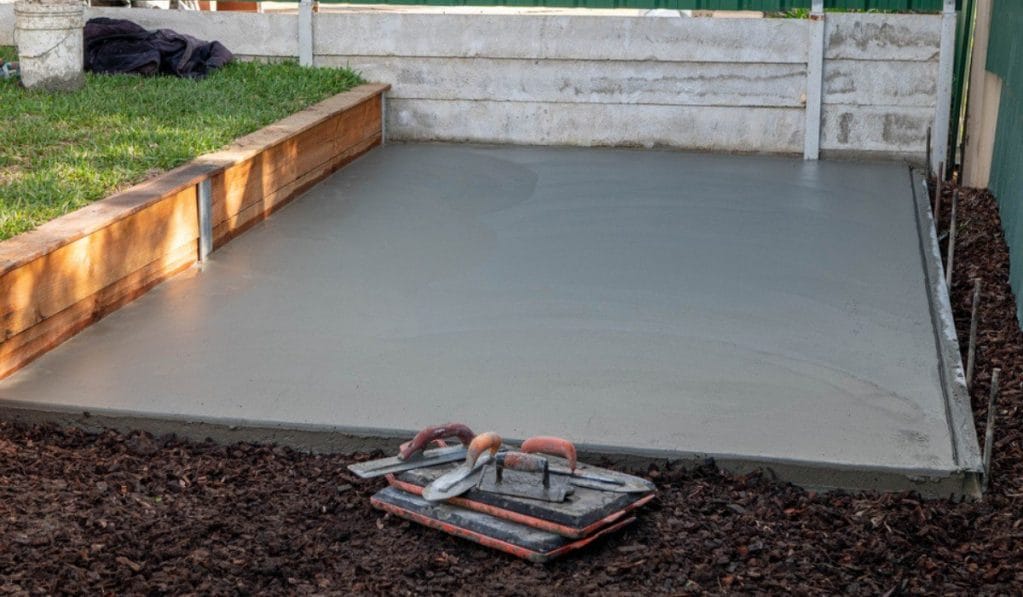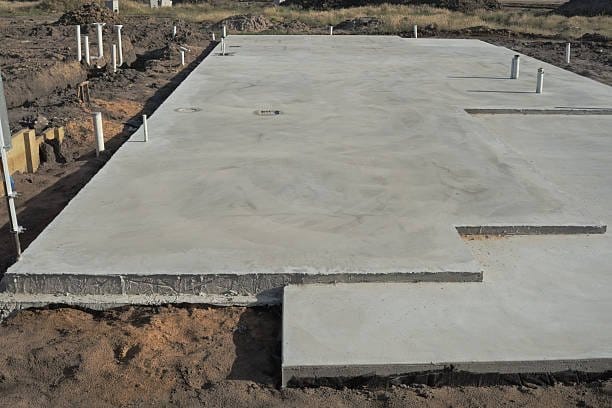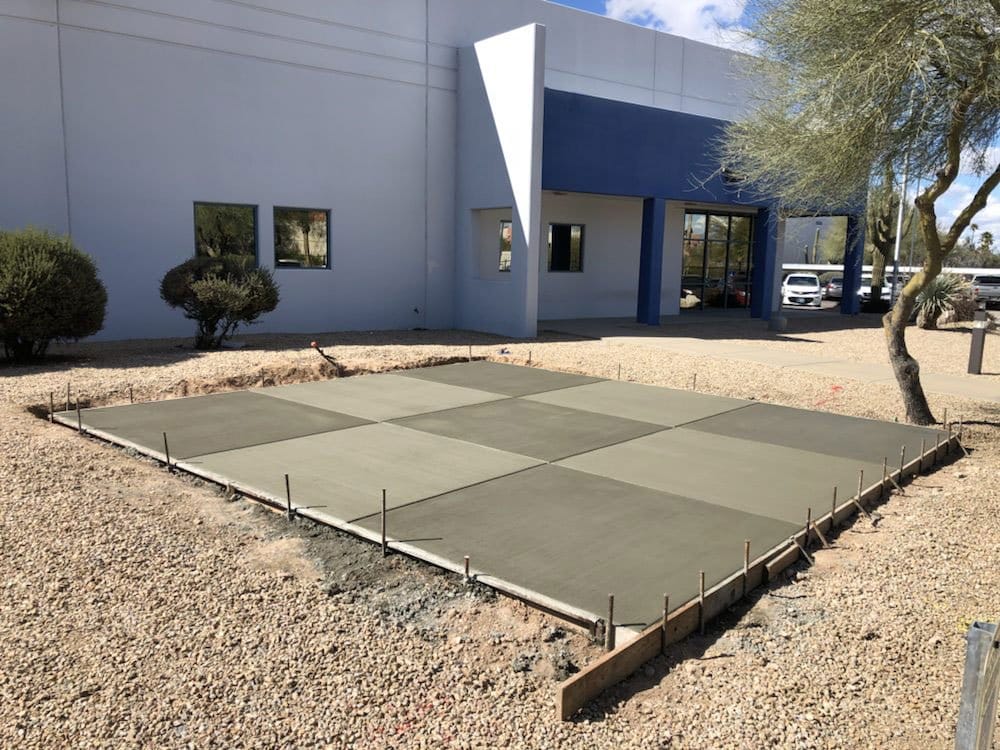
Concrete Slabs
A concrete slab is a common feature in many construction projects, such as building a patio, walkway, or foundation for a structure. In this article, we will discuss various aspects of concrete slabs, including their cost, installation process, frequently asked questions, and tips for working with concrete.
Check out our Concrete Page for more Concrete Services
Concrete slab cost ?
The cost of a concrete slab can vary depending on several factors. The size of the slab, the type of concrete used, and the region where the project is located all play a role in determining the overall cost. Additionally, factors such as the need for reinforcement, the complexity of the project, and any additional features like stamping or coloring can impact the final price.
Factors affecting the cost of a concrete slab
Several factors can affect the cost of a concrete slab:
- The size of the slab: Larger slabs require more materials and labor, thus increasing the cost.
- The type of concrete: Different types of concrete have varying costs.
- The need for reinforcement: Adding reinforcements like rebar or wire mesh can increase the cost.
- The complexity of the project: If the project requires complex forms or special finishes, the cost will be higher.
- The region: Construction costs vary by region, so the cost of a concrete slab may differ depending on where the project is located.
Average cost per square foot for concrete slabs
On average, the cost per square foot for a concrete slab ranges from $10 to $15. However, it’s essential to note that this is just an average, and the actual cost can be higher or lower depending on the factors mentioned above.
Determining the size of the slab per square foot
Before pouring a concrete slab, it’s crucial to determine the appropriate size. The size of the slab will depend on the desired use and the layout of the area. For example, a patio or walkway will require a smaller slab compared to a foundation for a building. It’s recommended to consult with a professional to ensure the size of the slab meets the specific requirements of the project.
How to pour a concrete slab?
Now that we’ve discussed the cost, let’s explore the process of pouring a concrete slab:
Preparing the area for the concrete slab
The first step in pouring a concrete slab is preparing the area. This includes clearing away any vegetation, leveling the ground, and excavating to the required depth. It’s important to ensure the subgrade is well-compacted and free from any debris that could affect the integrity of the slab.
Choosing the right type of concrete
Once the area is prepared, the next step is to choose the right type of concrete for the project. Different projects may require different concrete mixes, such as those designed for high strength or durability. It’s advisable to consult with a professional concrete contractor to determine the most suitable type of concrete for the specific project.
Working with concrete forms
Concrete forms are used to contain and shape the wet concrete as it cures. The forms can be made from various materials, such as wood or metal, and are essential for creating the desired shape and dimensions of the slab. It’s crucial to properly install and secure the forms to ensure the concrete is poured within the desired boundaries.


Frequently Asked Questions about concrete slabs
Here are some common questions related to concrete slabs:
How long does it take for concrete to cure?
The curing time for concrete can vary depending on factors such as temperature and humidity. In general, it takes around 28 days for concrete to fully cure and reach its maximum strength. However, it’s essential to follow the specific curing guidelines provided by the concrete manufacturer and consult with a professional to ensure proper curing.
How to level a concrete slab?
To level a concrete slab, specialized tools such as a screed or bull float are used during the concrete pouring process. The tools help to distribute the concrete evenly and remove any excess to achieve a level surface. It’s crucial to work with experienced concrete finishers who can ensure the slab is properly leveled.
What is the broom finish on concrete slabs?
A broom finish is a popular texture applied to concrete slabs. After the concrete is poured and leveled, a broom is dragged across the surface to create a rough texture that provides traction and prevents the slab from becoming slippery. The direction and type of broom used can affect the final appearance of the finish.
Tips for working with concrete
Here are some helpful tips for working with concrete:
Properly preparing the subgrade
A well-prepared subgrade is crucial for the longevity of the concrete slab. It’s important to compact the soil and remove any organic material or debris that could cause the slab to settle or crack over time.
Adding reinforcements to the concrete slab
In some cases, it may be necessary to add reinforcements to the concrete slab, such as rebar or wire mesh. These reinforcements help to increase the strength and durability of the slab, especially in areas prone to heavy loads or potential ground movement.
Using the right concrete mix
Choosing the correct concrete mix is essential for achieving the desired characteristics of the slab. The mix should take into account factors such as strength requirements, weather conditions, and the specific application of the slab. Consulting with a professional concrete supplier can ensure the appropriate mix is used.
How to build a concrete patio?
A concrete patio can enhance the beauty and functionality of an outdoor space. Here’s a general overview of the process:
Designing the layout of the patio
The first step in building a concrete patio is to design the layout. Consider factors such as the desired size and shape of the patio, as well as any additional features like steps or decorative elements. It’s helpful to create a detailed plan or work with a professional designer to ensure the patio meets your specific requirements.
Preparing the area and pouring the concrete
Once the layout is determined, the area for the patio must be prepared. This involves excavating the area, compacting the soil, and installing any necessary forms or reinforcement. The concrete can then be poured and leveled, following the recommended techniques for a quality finish.
Finishing and sealing the concrete patio
After the concrete is cured, various finishing techniques can be applied to enhance the appearance of the patio. This can include techniques such as stamping, coloring, or staining. Additionally, it’s crucial to seal the concrete to protect it from stains, moisture, and other damaging factors, thus extending its lifespan.


Oregon
Portland, Beaverton, Gresham, Hillsboro, Corbett, Cornelius, Fairview, Forest Grove, Gladstone, Happy Valley, King City, Lake Oswego, Milwaukie, Oregon City, Sherwood, Tigard, Troutdale, Tualatin, West Linn, Wilsonville, Wood Village, Aloha, Beavercreek, Boring, Cedar Mill, Clackamas, Damascus, Dunthorpe, Garden Home, Raleigh Hills, and West Slope

Washington
Vancouver, Battle Ground, Camas, Washougal, Ridgefield, La Center, Yacolt, Hazel Dell, Minnehaha, Salmon Creek, Walnut Grove, Orchards,